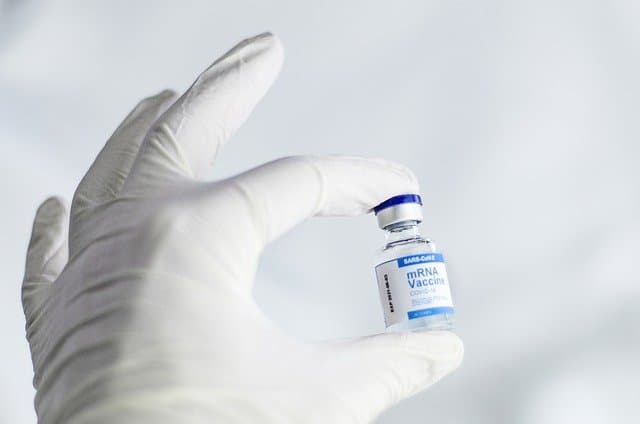The pandemic that started back in 2019 has been a cause of concern for many people all over the world. As the disease continues to spread, more and more people are looking for information on how to protect themselves from it. In this article, we will discuss the different types of tests that are available for COVID-19 and what each one entails.
Covid-19 is a novel coronavirus that was first identified in 2019. It is closely related to the SARS virus and has been linked to respiratory illness in humans. As of February 2020, there have been over 82,000 confirmed cases of Covid-19 worldwide. As such, researchers and health authorities are working on providing as much information as possible about the virus.
Testing positive for COVID-19 means that you will be dealing with respiratory problems soon. However, it is important to note that the symptoms and their severity vary from person to person. Some patients show no signs at all, while others begin experiencing mild to moderate respiratory issues. The true extent of Covid-19 is yet to be determined, but it seems that the virus presents itself in different ways for different people.
It has been established that there are several tests capable of detecting Covid-19 in a patient’s body. These tests can either detect the presence of COVID-19 antibodies or the genetic material from the virus itself. Without further ado, let’s go over each type of test and how they work.
Table of Contents
NAAT test
The NAAT test, or nucleic acid amplification test, is a fast and accurate way of detecting Covid-19 in a patient’s body. It can be done in local urgent care clinics and provides results within a few hours. The NAAT test is also very sensitive and can detect the virus even if it is present in low quantities. It is a PCR type of test where you would have a nasal pharyngeal swab or a pharyngeal swab taken from you, which is then put into a viral transport medium to preserve it. The swab will then be sent to the lab for testing, where it will be put in Covid-19 primers. This will result in the DNA amplification of COVID-19 genetic materials if they are present in your sample.
Antigen testing
Antigen testing works by detecting the presence of COVID-19 proteins or antigens in your body. This is done through a simple blood test where a small amount of blood is drawn from you and then sent to a lab for processing. The COVID-19 antigen shows up as a glowing yellow color if it is present in your sample, which can be seen under a microscope after staining.
NAAT vs antigen testing
One question that many people have been asking recently has to do with whether NAAT or antigen testing yields better results for COVID-19. Right now, both tests are being used in conjunction, so there might be some cross-reactivity when looking at the two types of tests together. However, when taken into consideration on their own, antigen testing is more accurate than NAAT. This is because NAAT has a lower sensitivity rate than antigen testing.
This means that the presence of antibodies for Covid-19 is detected at a higher rate using antigen tests due to its overall specificity. In contrast, a person’s antibody count may show a negative result even if they have COVID-19 present in their body, due to its overall lack of specificity. This makes antigen testing the preferred diagnostic test right now, since it can give more accurate results for patients with respiratory problems.
There are two main types of antigen tests used today: one type detects the actual virus material, while the other detects the viral proteins only. The former type uses immunohistochemical staining to detect COVID-19 protein, which is then viewed under a microscope. Another type uses enzyme immunoassay (ELISA) for detection, which is analyzed using spectrophotometry.
NAAT vs ELISA
Both NAAT and ELISA tests are antigen testing procedures, but they serve different purposes, thus the results will be different too. For one thing, NAAT tests can’t differentiate between previous exposure to Covid-19 and having the actual virus in your body. ELISA tests on the other hand have greater specificity due to their ability to examine antigens that are characteristic of COVID-19 only. This makes it easier for doctors to diagnose you with Covid-19 once again, since there won’t be a lot of false-negative results with ELISA tests.
“False negatives” in both NAAT and ELISA tests can also happen when cross-reactivity occurs. This is where the antibodies would bind to other antigens that are present in your body such as bacteria or fungi, which will then cause your test results to show a negative result even if you do have COVID-19 in your system. There’s no definite explanation for why cross-reactivity happens, but it can be due to:
- Exposure time: the longer you’ve been exposed to COVID-19, the more likely it is that cross-reactivity will happen
- Age: older people who may have been exposed to tuberculosis for many years may have cross-reactivity towards that antigen
- Viral interference: having other viruses such as Epstein-Barr virus (EBV) may cause a false-negative result, which could explain why some people who have COVID-19 only test negative for it despite having respiratory symptoms
“False negatives” can be prevented by running NAAT and ELISA tests simultaneously, so the results of both will match and there won’t be any interference between the two. This is what’s currently being done in testing facilities today. If you’re planning to get tested for Covid-19, then expect to go through both NAAT and ELISA procedures at least once before moving on to another type of test such as PCR.
The reason why there is a second type of test (ELISA) is that the first test has such high false-negative rates that it’s not useful by itself. If they run the two tests simultaneously, then they only need to do NAAT as well unless someone shows up with a very clear positive result on ELISA testing alone.

What to do if you think you might have COVID-19?
If you’re currently experiencing respiratory problems, then it’s best to get tested right away. In the past, Covid-19 was called “walking pneumonia” because its symptoms were very similar to that of pneumonia and other respiratory infections. It’s not a surprise why it’s been called by this name, since around 80% of people who have COVID-19 display respiratory issues. Please refer to your local healthcare website for the latest updates on COV-19 procedures and symptoms, and if you think you may have COVID-19, then visit your local medical facility for a checkup. Even if you are not positive for COVID-19, the number of people being infected spikes daily, and you may even have had it and didn’t consider the symptoms properly. Take precautionary measures and do some necessary things to stay healthy, which can benefit your overall health in the long run.



